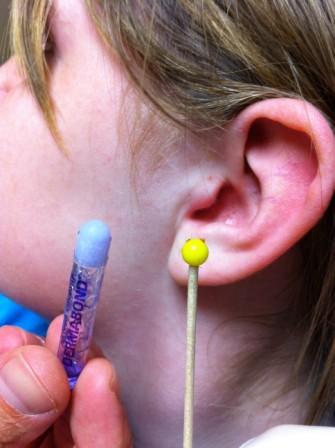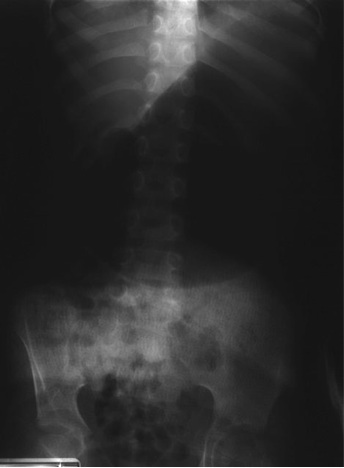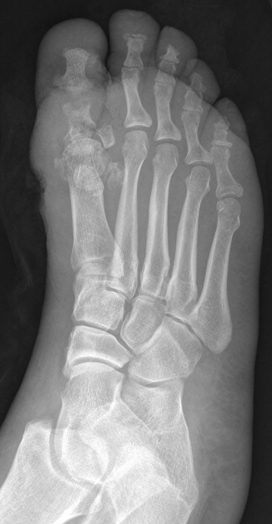Category: Cardiology
Keywords: acute MI, MI, myocardial infarction, acute coronary syndrome, women (PubMed Search)
Posted: 10/23/2011 by Amal Mattu, MD
Click here to contact Amal Mattu, MD
"Women experience higher mortality rates and more adverse outcomes after acute MI than men, despite less obstructive CAD and plaque burden."(1)
How can this be explained? It turns out that women have more frequent coronary remodeling of vessels. "Remodeling" refers to the concept that as plaques grow, they tend grow into the vessel wall causing outward bulging of the wall, rather than growing into the vessel lumen. That means that standard coronary angiography and even stress testing often miss significant lesions because they only evaluate lumen obstruction....which is not directly reflective of plaque size/burden.
The net effect of the above is that women are more likely to have false negative stress tests and angiograms that appear to show non-significant occlusions. Until we have reliable tests that evaluate true plaque burden rather than just vessel occlusion, we can't completely rely on stress testing and angiography to rule out the the presence of significant plaques.
1. Della Rocca DG, Pepine CJ. What causes myocardial infarction in women without obstructive coronary artery disease? Circulation 2011;124:1404-1406.
2. Reynolds HR, Srichai MB, Iqbal SN, et al. Mechanisms of myocardial infarction in women without angiographically obstructive coronary artery disease. Circulation 2011;124:1414-1425.
Category: Orthopedics
Keywords: TFCC, triangular fibrocartilage complex, wrist (PubMed Search)
Posted: 10/23/2011 by Brian Corwell, MD
(Updated: 12/16/2025)
Click here to contact Brian Corwell, MD
The TFCC (triangular fibrocartilage complex) is a ligamentous/cartilage like complex similar to the meniscus of the knee located on the ulnar side of the wrist.
http://yanyanxu.com/wp-content/uploads/2008/01/trifibcc.gif
Hx: ulnar sided wrist pain following trauma and associated with activity related mechanical symptoms such as clicking.
PE: tenderness to palpation distal to ulnar head or at ulnar styloid . Tenderness against resisted radial deviation.
Plain film may show ulnar styloid avulsion or injury to carpal structures.
Refer to hand/wrist surgeon
Splint in ulnar gutter of long arm spica
MRI or arthrogram are studies of choice.
http://www.cobalthealth.co.uk/MImageGen.ashx?image=%2Fmedia%2F12951%2Fwrist-tfcc-tear-big.jpg&width=170&crop=true
Category: Pediatrics
Keywords: dermabond, glue, foreign body, (PubMed Search)
Posted: 10/21/2011 by Mimi Lu, MD
Click here to contact Mimi Lu, MD

Category: Toxicology
Keywords: carbon monoxide (PubMed Search)
Posted: 10/20/2011 by Fermin Barrueto
Click here to contact Fermin Barrueto
Carbon Monoxide Toxicity and Hyperbaric Oxygen Treatment
CO disrupts cellular function by several mechanisms at a
cellular/mitochondrial level. Ultimately, these disruptions are
manifested as tissue hypoxia and hypoperfusion.
Initial symptoms may be subtle and nonspecific. Be sure to ask about
CO exposure when evaluating “viral syndrome” or patients that present
with non-specific neurological complaints especially during fall and
winter months, when people first start using their heating, or after
power outages and generator use. Dysrhythmias, cardiomopathy, MI and
sudden cardiac arrest are reported in severe CO poisoning.
Lab studies- COHb, base excess, lactate and any other studies based on
presentation.
Supplemental oxygen is the cornerstone of treatment. Oxygen
delivered at hyperbaric pressure (as opposed to sea-level) will
increase the rate of CO dissociation from hemoglobin, and mitigate
damage to cellular and mitochondrial function.
Definite Indications for HBOT: Current evidence supports the use for
HBOT to reduce cognitive sequelae in CO poisoned patients who have:
LOC , seizure, exposure >23 hours, COHb of 25% or more, and age >36.
Relative Indications: persistent symptoms after 100% O2 or change in
mental status, pregnancy, persistent cardiac ischemia, increased COHb
levels.
Disposition: Clinical judgment should guide your decision. Most
patients with mild symptoms can be discharged after treatment. If
patient has a more concerning presentation with several risk factors
(extremes of age, CAD, unconscious at arrival in the ED, etc…)
consider admission.
Category: Neurology
Keywords: fundoscopic examination, central retinal vein occlusion, central retinal artery occlusion (PubMed Search)
Posted: 10/19/2011 by Aisha Liferidge, MD
Click here to contact Aisha Liferidge, MD
Differentiating Central Retinal Artery vs. Vein Occlusion Fundoscopically
Category: Critical Care
Posted: 10/18/2011 by Mike Winters, MBA, MD
(Updated: 12/16/2025)
Click here to contact Mike Winters, MBA, MD
SAH and Electrolyte Disorders
Wartenberg KE. Critical care of poor-grade subarachnoid hemorrhage. Curr Opin Crit Care 2011; 17:85-93
Category: Visual Diagnosis
Posted: 10/17/2011 by Haney Mallemat, MD
Click here to contact Haney Mallemat, MD
5 year-old male with developmental delay presents with intractable non-bloody and non-bilious vomiting over 10 days; bowel movements are normal. Four weeks ago he was placed in a hip-spica cast following a motor vehicle crash. Abdominal x-ray is below. Diagnosis?

Answer: CAST syndrome (also known as Superior Mesenteric Artery Syndrome)
Wheeless Textbook of Orthopedics. Updated August 29,2011
Lichenstein, R. Radiology Cases in Pediatric Emergency Medicine, Volume 5, Number 16
Follow me on Twitter (@criticalcarenow) or Google+ (+haney mallemat)
Category: Cardiology
Keywords: congestive heart failure, bnp, chf (PubMed Search)
Posted: 10/17/2011 by Amal Mattu, MD
(Updated: 12/16/2025)
Click here to contact Amal Mattu, MD
Elevated BNP levels are found in conditions besides acutely decompensated CHF. These conditions can include:
Older age
Renal failure
Severe sepsis
PE
Chronic CHF
These conditions will often produce BNP elevations in an intermediate range, but if the elevation is markedly positive, the acutely decompensated CHF is much more likely.
[adapted from ACEP speaker Matthew Strehlow, MD]
Category: Orthopedics
Keywords: Sinus tarsi syndrome (PubMed Search)
Posted: 10/15/2011 by Michael Bond, MD
(Updated: 9/24/2013)
Click here to contact Michael Bond, MD
Sinus Tarsi Syndrome
Category: Pediatrics
Posted: 10/14/2011 by Rose Chasm, MD
(Updated: 12/16/2025)
Click here to contact Rose Chasm, MD
Category: Neurology
Keywords: sciatica, straight leg raise test (PubMed Search)
Posted: 10/12/2011 by Aisha Liferidge, MD
(Updated: 12/16/2025)
Click here to contact Aisha Liferidge, MD
Category: Critical Care
Keywords: listeria, food borne illness, cns infection (PubMed Search)
Posted: 10/11/2011 by Haney Mallemat, MD
Click here to contact Haney Mallemat, MD
Lisiteria Monocytogenes is typically transmitted from ingestion of contaminated food such as unpasteurized milk or cheese, raw foods, and recently cantaloupes; transmission from veterinary exposure, infected soil and water have also been reported.
Listeria has a predilection for the central nervous system (CNS) causing several infections including meningioencephalitits, brain or spinal abscess, cerebritis (infection of brain parenchyma), and rhomboencephalitis (encephalitis of the brainstem).
Risk factors include immunosuppression, advanced age, newborns, and pregnancy.
There is no clinical way to distinguish CNS infection with Listeria from other pathogens, therefore blood and cerebrospinal fluid (CSF) culture is required.
CSF analysis demonstrates pleocytosis, elevated protein, and low glucose. CSF gram stain has a low sensitivity (~33%), but consider Listeria in the differential if "diptheroid-like" bacteria are reported on gram stain.
Ampicillin is the drug of choice and should be continued for at least three weeks (sometimes longer). Adding gentamycin is sometimes recommended for synergy in severe infection.
Mylonakis E, Hohmann EL, Calderwood SB. Central nervous system infection with Listeria monocytogenes. 33 years' experience at a general hospital and review of 776 episodes from the literature. Medicine (Baltimore). Sep 1998;77(5):313-36.
http://emedicine.medscape.com/article/220684-overview
http://www.cdc.gov/listeria
Follow me on Twitter (@criticalcarenow) or Google+ (+haney mallemat)
Category: Cardiology
Keywords: acute MI, MI, myocardial infarction, acute coronary syndrome, posterior stemi (PubMed Search)
Posted: 10/9/2011 by Amal Mattu, MD
(Updated: 12/16/2025)
Click here to contact Amal Mattu, MD
ST depression in the right precordial leads can be anteroseptal ischemia, but it can also be a posterior STEMI. What are the clues to posterior STEMI?
Posterior leads (a couple of leads placed in the left mid-back area below the tip of the scapula) can help confirm posterior STEMI if there's STE in those leads. If there's no STE, call it just ischemia!
Category: Orthopedics
Keywords: dislocation, fibula, reduction (PubMed Search)
Posted: 10/8/2011 by Brian Corwell, MD
(Updated: 12/16/2025)
Click here to contact Brian Corwell, MD
Anterolateral dislocation is most common (>85%)
As the tib/fib joint has its own synovial cavity, a knee effusion will not be seen
Mechanism: fall on the flexed knee with foot/ankle inversion
Hx: swelling, variable amount of lateral knee pain (anywhere from mild discomfort to inability to bear weight)
PE: Prominence of the fibular head, ankle motion exacerbates knee pain. no associated neurovascular issues
However with less common dislocations (posterior and superior) peroneal nerve injury may occur
Reduction: Place patient supine with knee flexed to 90 degrees. Ankle should be dorsiflexed and externally rotated.
REVERSE THE INJURY: Apply firm posteriorly directed pressure to the fibular head. May head an audible pop as fibular head reduces. Reassess collateral ligament function.
Category: Pediatrics
Posted: 10/8/2011 by Vikramjit Gill, MD
(Updated: 12/16/2025)
Click here to contact Vikramjit Gill, MD
Peritoneal dialysis (PD) is a commonly used form of dialysis for pediatric patients with end-stage renal disease, particularly in children less than five years of age.
One well known complication to this mode of dialysis is PD-associated peritonitis.
Children may present with fever, abdominal pain and a cloudy dialysate.
If peritonitis is suspected, obtain sample of dialysate fluid and send for cell count, Gram’s stain and culture.
Cell count in PD-associated peritonitis is usually WBC >100 with >50% neutrophils.
Both gram-positive and gram-negative organisms are involved with PD-associated peritonitis . Keep both MRSA and Pseudomonas in mind.
In the ED, empiric therapy should cover both gram-positive and gram-negative organisms. Initiate antibiotic therapy with vancomycin and either a third-generation cephalosporin (ceftazidime) or aminoglycoside, respectively.
For PD-associated peritonitis, intraperitoneal (IP) administration of antibiotics is preferred over IV.
1. Li PK, et al. Peritoneal Dialysis-Related Infections Recommendations: 2010 Update. Peritoneal Dialysis International, Vol. 30, pp. 393–423.
2. Fadrowski JJ, et al. Children on long-term dialysis in the United States: findings from the 2005 ESRD clinical performance measures project. Am J Kidney Dis. 2007;50(6):958.
Category: Pharmacology & Therapeutics
Keywords: Intranasal administration,fentanyl,ketorolac,sumatriptin,glucagon,desmopressin,midazolam (PubMed Search)
Posted: 10/6/2011 by Ellen Lemkin, MD, PharmD
Click here to contact Ellen Lemkin, MD, PharmD
There are an increasing number of intranasal medications commercially available for use, which is opportune as more and more intravenous medications become scarce.
These now include:
| Generic name | Brand Name | Usage |
| Fentanyl | Instanyl | Opiate analgesic |
| Ketorolac | Sprix | NSAID analgesic |
| Desmopressin (DDAVP) | Stimate | Bleeding |
| Vitamin B12 | Nasobal | Anti-migraine (yes!) |
| Sumatriptan | Imitrex | Anti-migraine |
| Zolmitripran | Zomig | Anti-migraine |
*******In addition, you can administer glucagon, midazolam and narcan intranasally as well.
Veldhorst-Jassen, NM, Fiddelers AA, Paul-Hugo M et all. A review of the clinical pharmacokinetics of opioids, benzodiazepines, and antimigraine drugs delivered intranasally. Clinical Therapeutics Nov 12, 20009;31(12):2954-87.
Wolfe TR, Braude DA. Intranasal Medication Delivery for Children: A Brief Review and Update. Pediatrics 2010;126;532:532-7.
Category: Neurology
Keywords: pontine stroke, pontine hemorrhage, corneal reflex, miosis, opiate abuse, opiate overdose (PubMed Search)
Posted: 10/5/2011 by Aisha Liferidge, MD
Click here to contact Aisha Liferidge, MD
Category: Neurology
Keywords: pontine stroke, pontine hemorrhage, corneal reflex, miosis, opiate abuse, opiate overdose (PubMed Search)
Posted: 10/5/2011 by Aisha Liferidge, MD
Click here to contact Aisha Liferidge, MD
Category: Critical Care
Posted: 10/4/2011 by Mike Winters, MBA, MD
(Updated: 12/16/2025)
Click here to contact Mike Winters, MBA, MD
Fever and ICH
Flower O, Smith M. The acute management of intracerebral hemorrhage. Curr Opin Crit Care 2011; 17:106-14.
Category: Visual Diagnosis
Posted: 10/3/2011 by Haney Mallemat, MD
Click here to contact Haney Mallemat, MD
Question: 50-year-old diabetic female s/p foot burn several weeks ago, now presenting with pain and discharge from a poorly healing wound. Diagnosis?

Answer: Osteomyelitis
Osteomyelitis
· Acute or chronic bone infection
· Risk factors: Immunosuppression (diabetes, chronic steroid use, AIDS, and sickle-cell dz.)
· Secondary to direct trauma, contiguous spread from local infection, or hematogenous spread (in children)
· Common bacteria: S. Aureus, Pseudomonas, Salmonellae (classically in Sickle cell dz.)
· X-ray (limited sensitivity):
- 3-5 days post-infection: Soft-tissue swelling
- 14-21 days: Some patients demonstrate bony changes (e.g., periosteal elevation, bone lucencies, etc.)
- >28 days: >90% with Xray findings
· MRI is the imaging gold standard
· Two of the following needed for diagnosis:
- Purulent aspiration
- Positive blood or tissue culture
- Positive imaging
- Tenderness + erythema / edema
· Antibiotic coverage based on culture results. When immediate empiric therapy required (sepsis), cover most likely pathogen plus MRSA.
References
Carek PJ, Dickerson LM, Sack JL. Diagnosis and management of osteomyelitis. Am Fam Physician. 2001 Jun 15;63(12):2413-20.
Pruthi S, Thapa MM. Infectious and inflammatory disorders. Radiol Clin North Am. Nov 2009;47(6):911-26.
Zink BJ, Raukar NP. Bone and Joint Infections. In: Marx JA, Hockberger RS, Walls RM, Adams JG, Barsan WG, Biros MH, Danzl DF, Gausche-Hill M, Ling LJ, Newton EJ, eds. 7th ed. Emergency Medicine: Concepts and Clinical Practice.Volume 2. Philadelphia, PA: Mosby; 2010:1821-1830.
Follow me on Twitter (@criticalcarenow) or Google+ (+haney mallemat)
